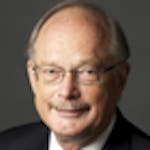The ambitious transformation of the World Health Organization (WHO) took a huge step forward on March 6. Director-General Dr. Tedros Adhanom Ghebreyesus announced major organizational changes aimed at aligning processes and structures to reach WHO’s “triple billion” targets by 2023: Ensuring that 1 billion more people benefit from universal health coverage; 1 billion more people have better protection from health emergencies; and 1 billion more people enjoy better health and well-being.
When Dr. Tedros first announced his senior leadership team and an interim organizational structure in October 2017, outsiders were impressed by their credentials but unsure of the extent of their responsibilities. In May 2018, the 71st World Health Assembly approved WHO’s 13th General Program of Work (GPW 13), Dr. Tedros’ vision for the organization. On March 6, the Director-General shuffled that leadership team and announced a new, more coherent structure to implement the program of work based on four pillars: programs, emergencies, business operations, and external relations and governance.
In speech after speech, Dr. Tedros emphasizes what, in the end, matters in global health: Making a difference in countries, on the ground. WHO operates at the global, regional, and national levels, and in the past some observers have expressed concern that the regional directors have too much autonomy. A year before he was elected, I asked Dr. Tedros about his views on the independent election of the regional directors. He responded that WHO’s structure is not the problem; instead, the different levels of WHO need to unite at all levels on particular goals. This week’s announcement was a clear demonstration of that philosophy, as the Director-General and all six regional directors, speaking from their regional offices, announced changes intended to make WHO more effective and efficient.
Transforming for impact
In the speech to all WHO staff, entitled “Transforming for Impact,” Dr. Tedros praised staff commitment, passion, and pride. A new WHO Academy – based in Lyon, France, with regional hubs – will increase professional development opportunities. The Director-General also emphasized that transformation is about “changing the DNA of the organization to deliver impact,” including the “radical redesign” of 11 major processes and the addition of two new processes for strategic policy dialogue and innovation (including an Innovation Hub based in Geneva). Policy, diplomacy, and external relations are an integral part of the strategy to deliver on GPW 13.
WHO also is taking steps to enhance diversity and inclusion, and that includes a mobility program to ensure that staff are constantly gaining new experiences in new places as a key criterion for career progression. This is an important, long overdue move. But change is difficult on personnel in any large organization, and the mobility program may meet with some staff resistance.
Resources and partnerships
Fundamental to the success of this transformation will be the availability of funding. WHO is consolidating its resource mobilization efforts under one roof and will hold its first annual WHO Partners Forum in Sweden in April in hopes of building momentum for more flexible, predictable, and multi-year funding. It also plans to establish the WHO Foundation to help generate resources from previously untapped sources. Whether donors will provide the necessary resources for this ambitious new agenda still remains to be seen, but Dr. Tedros is hopeful.
Dr. Tedros also placed great emphasis on forging a new WHO mindset for partnerships. He has consistently praised the work of other major global health institutions, and in his March 6 speech declared, “The success of the Global Fund, Gavi, UNITAID, and others is our success.”
WHO is an organization in which the 194 Member States wield great control. Yet the role of civil society and the private sector are critical to improving health outcomes. Dr. Tedros recognizes that WHO’s Framework of Engagement with Non-State Actors (FENSA), intended to avoid conflicts of interest, has at times been problematical. He told the staff that FENSA “is not a wall to keep out the private sector; it’s a guardrail to facilitate collaboration within appropriate boundaries.” He said WHO must engage more proactively with private sector companies. He also praised the recommendations of the Civil Society Task Team, co-facilitated last year by the UN Foundation and RESULTS, on how WHO can engage more constructively with civil society organizations. In a statement heartening to those who have been frustrated by FENSA, Dr. Tedros also said: “We must approach partnerships with a can-do mindset. We must focus on our objectives, pursue bold partnerships, and manage the risks, rather than avoiding risks at all costs, and foregoing opportunities as a result.”
Other structural changes:
- Global health emergencies: Global health security requires the ability to prevent, detect, and respond to infectious disease threats. WHO’s Health Emergencies Program, established after the inadequate global response to the 2014 Ebola outbreak in West Africa, today wins praise for its efforts to combat, under the most difficult circumstances, what has become the second largest Ebola outbreak in history – and the first in an active war zone – in eastern Democratic Republic of the Congo. But prevention is too often neglected, and Dr. Tedros noted, “Fighting fires is important. But preventing them is even better.” The new structure creates a Division of Emergency Preparedness and the International Health Regulations as a complement to Emergency Response. Both divisions will be supervised by a highly experienced Executive Director who has been a leader and innovator in tackling epidemics and other public health emergencies.
- Science, digital health and data: One of WHO’s fundamental roles is to set global standards, and that normative function will be strengthened in a new Division of the Chief Scientist. A new Department of Digital Health recognizes important, growing developments in healthcare delivery. And a new Division of Data, Analytics and Delivery is intended to significantly enhance the collection and usage of data to drive policy change.
- Antimicrobial resistance: WHO serves as the secretariat for the UN’s Inter-Agency Coordination Group on Antimicrobial resistance (AMR), one of the most urgent long-term health threats, and now there will be an Assistant Director-General for AMR.
- Polio eradication and transition: One of the biggest issues facing global health today is the planning for the eventual wind-down of the billion-dollar-a-year Global Polio Eradication Initiative after the certification of eradication. Commendably, the WHO polio program leader now will work in the Office of the Director-General, while matters related to the polio “transition” – eventually transferring the polio program’s know-how and assets to other health programs – will be incorporated into the broader work of immunizations and vaccines rather than treated as a separate initiative.
- Universal Health Coverage: Tedros described Universal Health Coverage (UHC) as WHO’s top priority, and that work will be supported by a division on UHC and Life Course and another on UHC and Communicable and Non-Communicable Diseases.
- Gender, equity, and rights: The Department of Gender, Equity, and Rights will move into the Director-General’s Office, recognizing his commitment to mainstreaming these functions in all of WHO’s work.
WHO and United Nations Reform
At WHO’s Executive Board meeting in January, Dr. Tedros emphasized that the WHO transformation is closely aligned to broader UN reforms being led by Secretary-General António Guterres: “I want to emphasize that WHO is fully committed to UN reform – not just to participating in it, but to playing an active leadership role. As a technical specialized agency, we have the most to gain from UN reform because it allows us to amplify the impact of our normative work. It’s a great opportunity for global health.”
Under the new structure, WHO’s Office at the UN in New York will be led by a member of the senior management team representing WHO at the UN and coordinating efforts on UN reform.
By aligning for impact, WHO has become a leader in the effort to make the UN System fit for purpose. The implementation of WHO’s transformation will bear close watching, and not just by global health experts.
Ambassador John E. Lange (Ret.) serves as the United Nations Foundation’s Senior Fellow for Global Health Diplomacy.



 View All Blog Posts
View All Blog Posts
